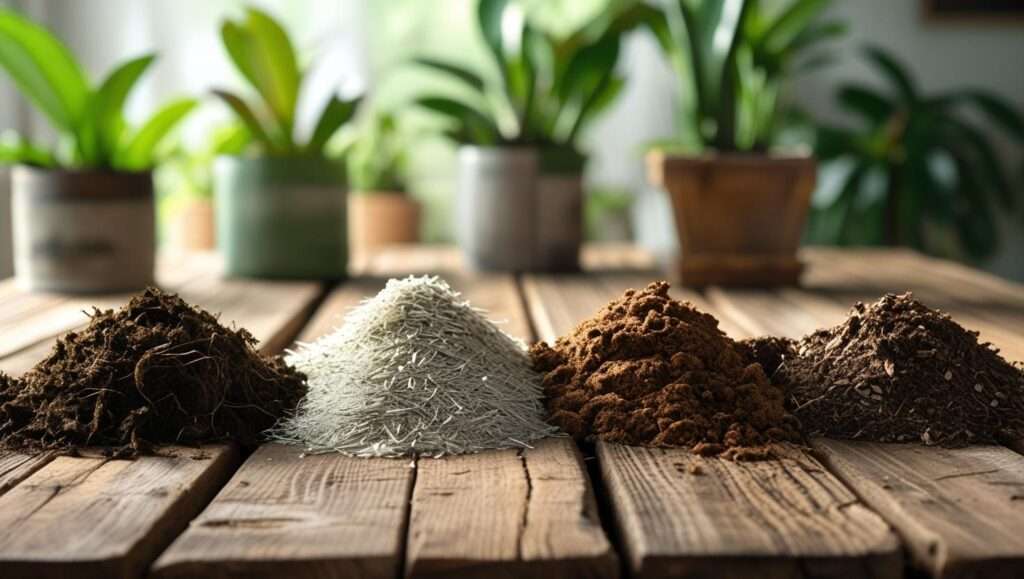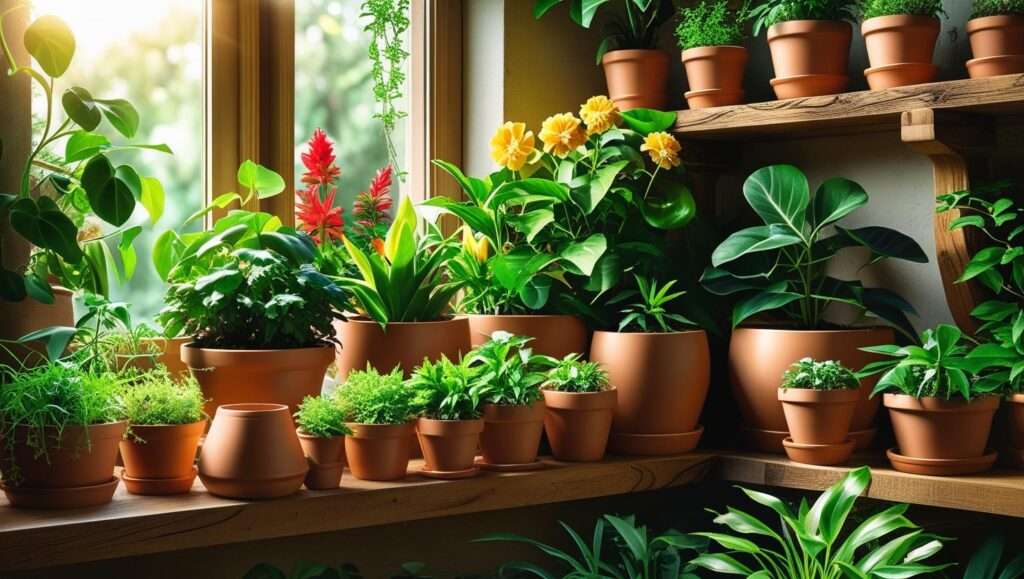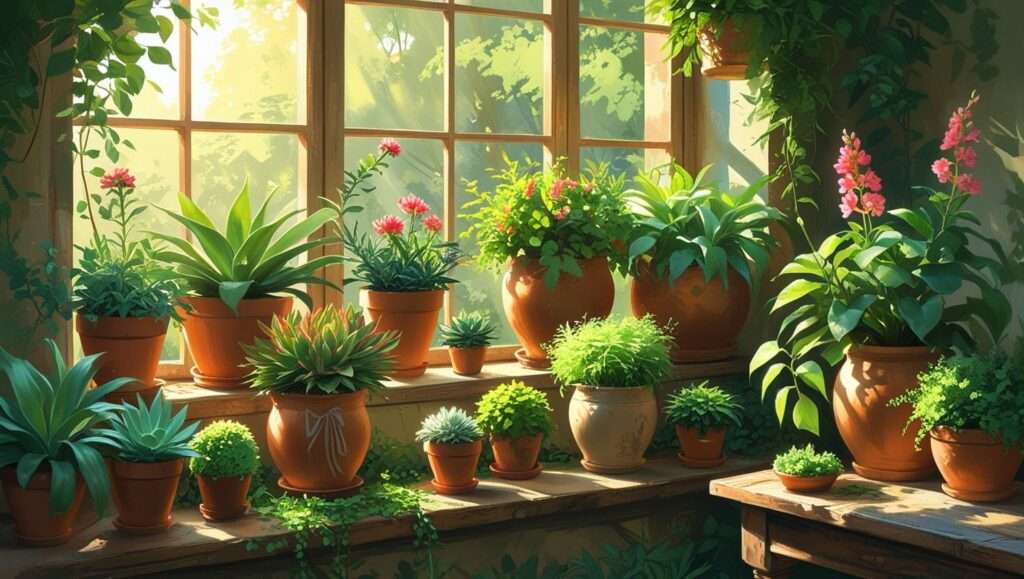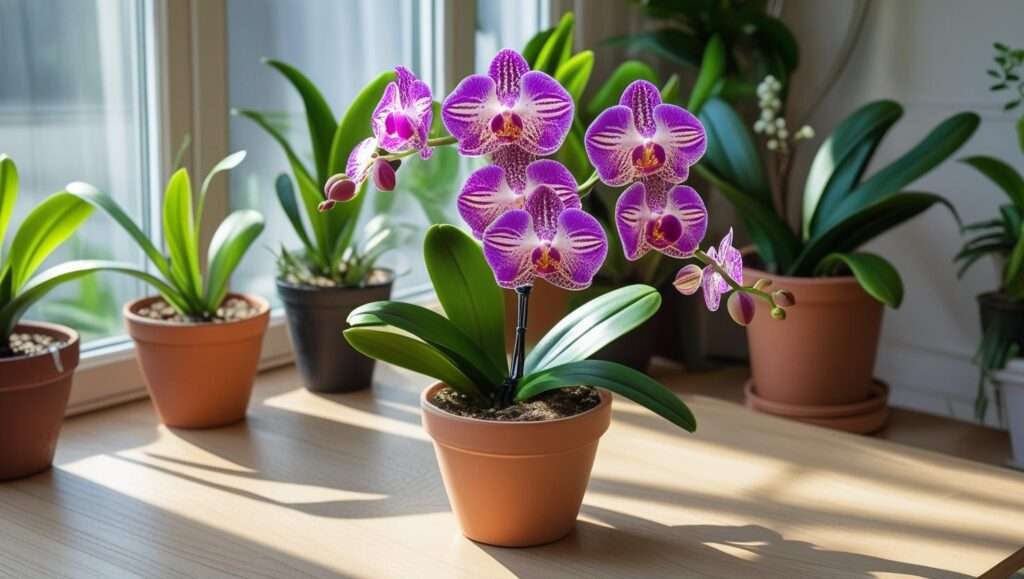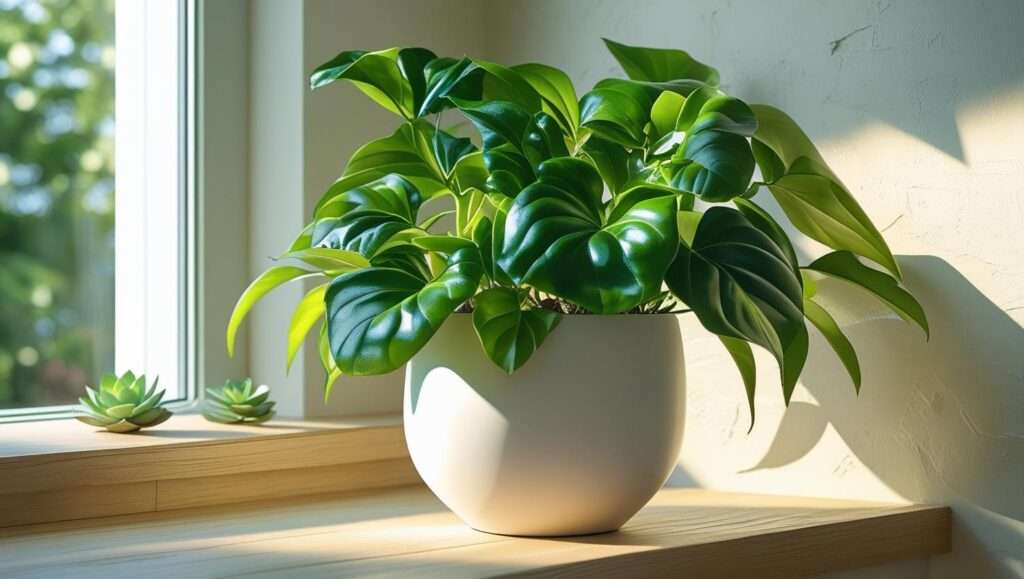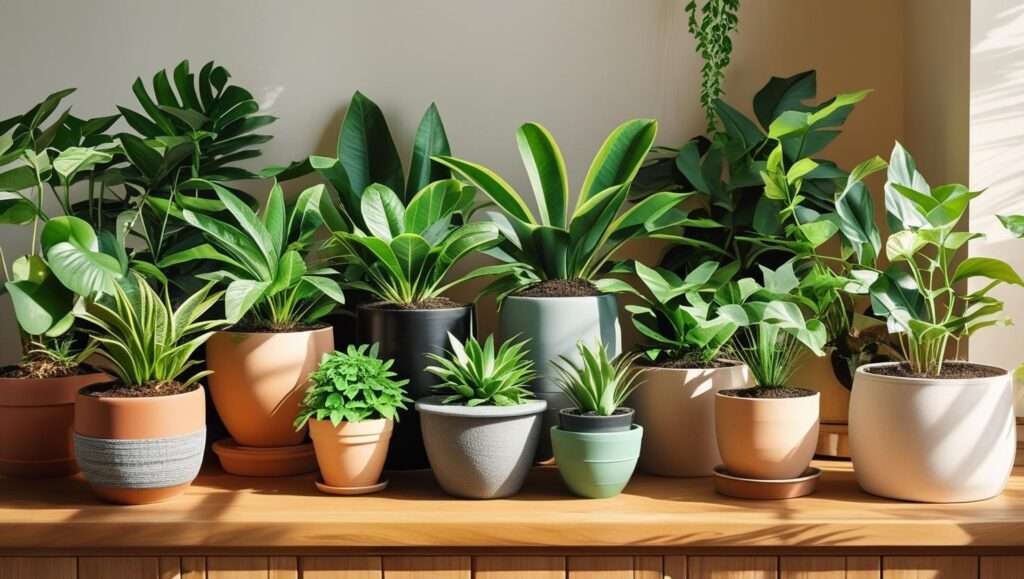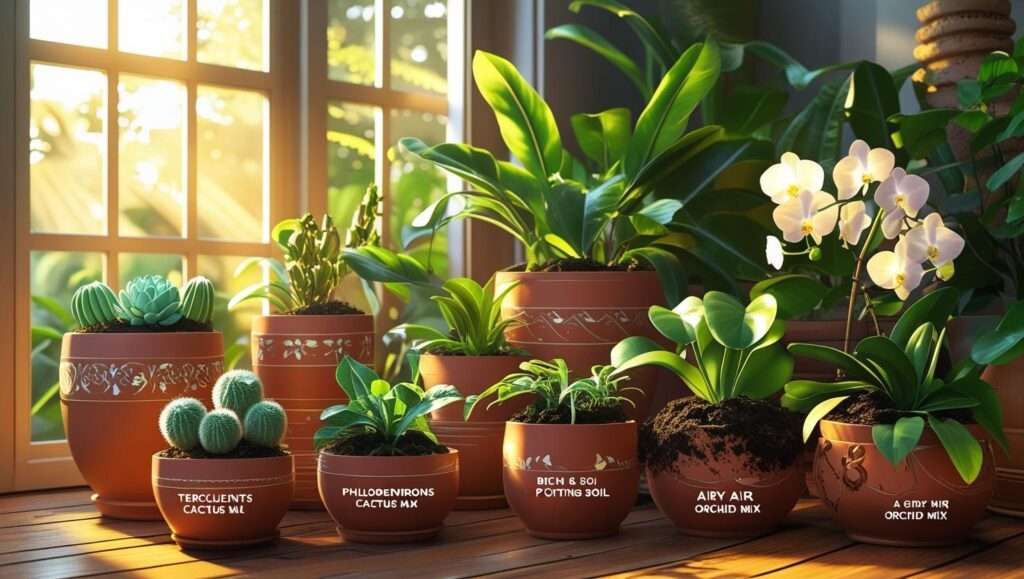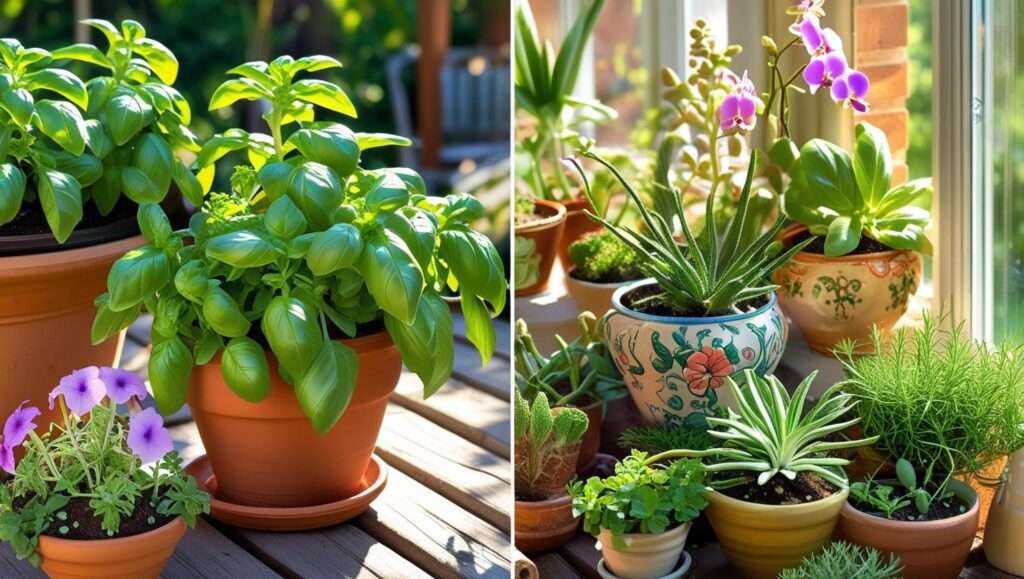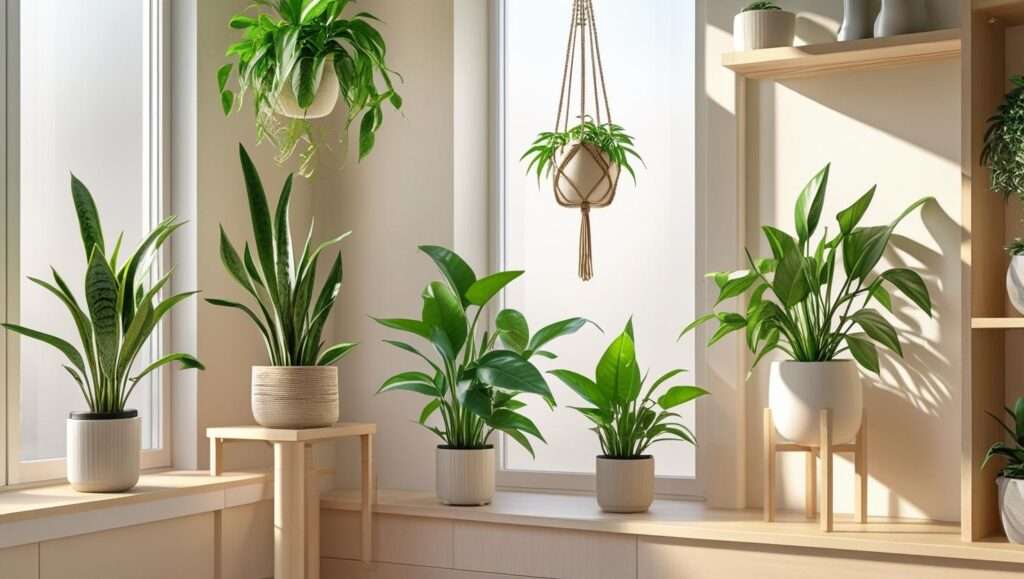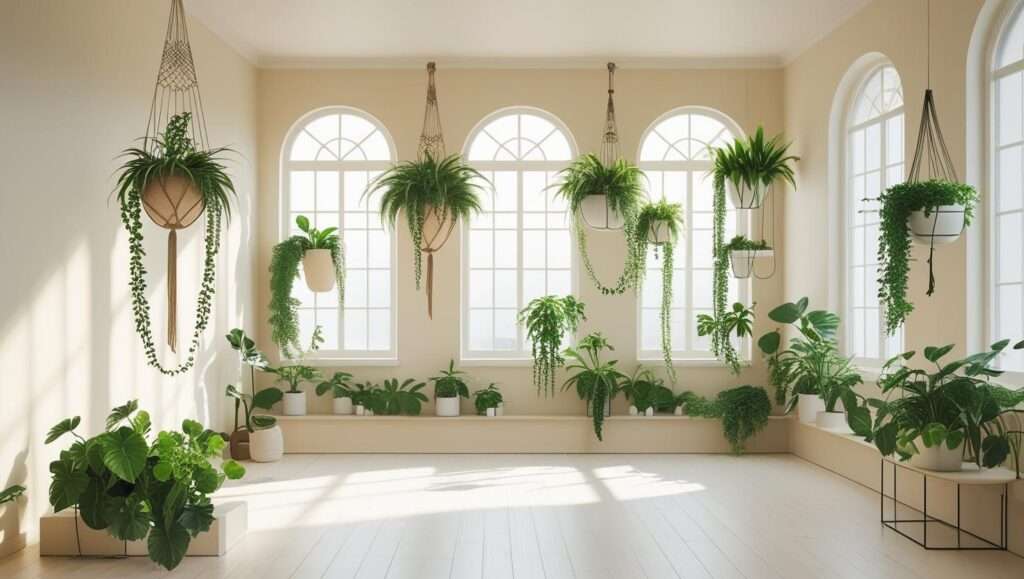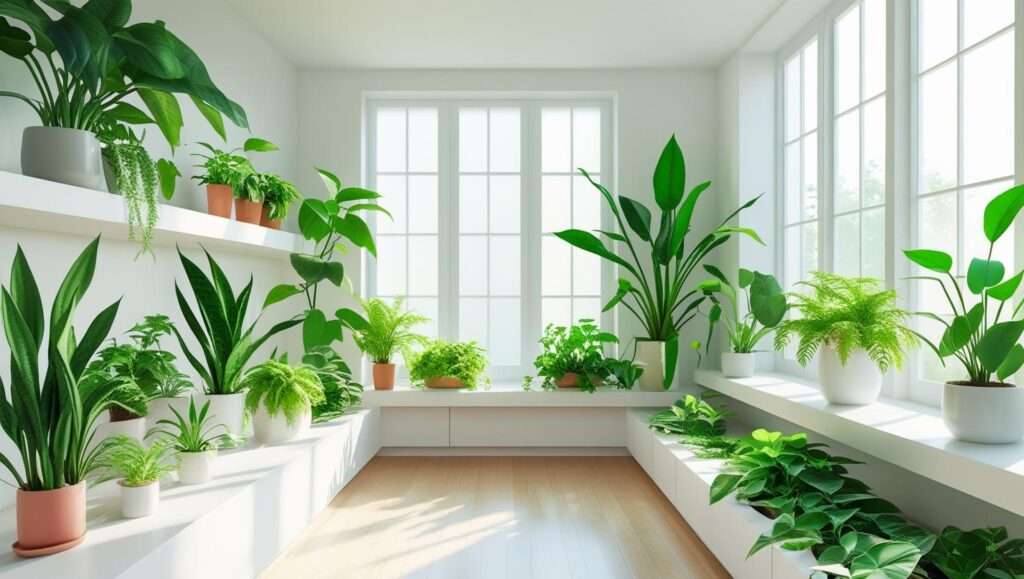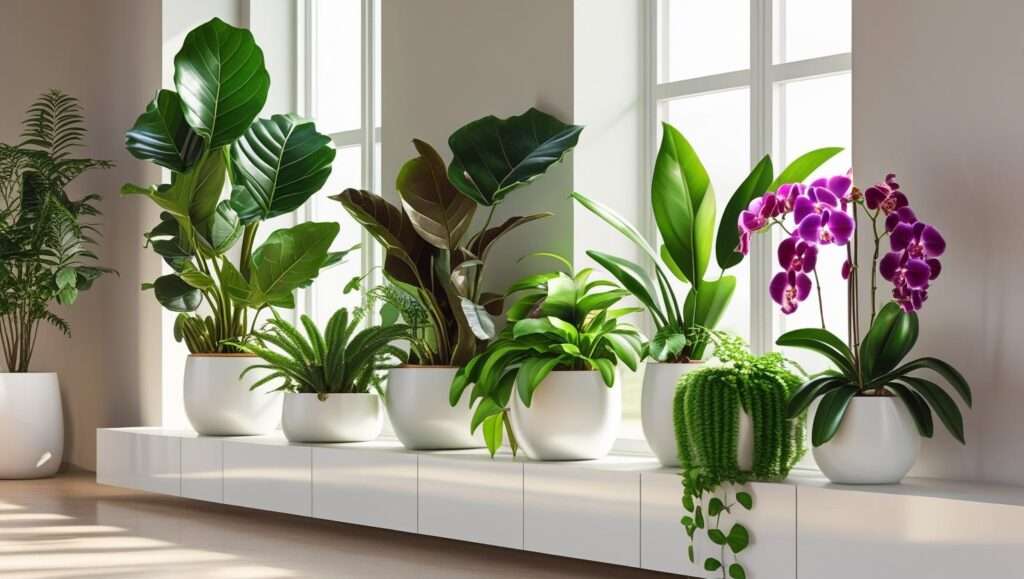Imagine your lush indoor jungle—vibrant monsteras, cascading pothos, and thriving succulents—suddenly wilting, their leaves yellowing despite your care. The culprit? Often, it’s the wrong soil. Choosing the best soil for indoor plants is the cornerstone of healthy, thriving greenery, yet it’s a step many overlook. Soil isn’t just dirt; it’s a living ecosystem that delivers nutrients, supports roots, and manages water. This guide unlocks the secrets to selecting or creating the perfect soil mix, tailored to your plants’ needs, to prevent issues like root rot or stunted growth. Whether you’re a beginner or a seasoned plant parent, you’ll discover expert tips, step-by-step instructions, and practical solutions to transform your indoor plants into showstoppers.
Why Soil Quality Is Critical for Indoor Plants
The Role of Soil in Plant Health

Soil is the foundation of your indoor plants’ health, acting as their anchor, nutrient source, and water regulator. Unlike outdoor plants that draw from vast ecosystems, indoor plants rely entirely on the limited soil in their pots. The right soil mix ensures roots get oxygen, nutrients are absorbed efficiently, and water drains properly to prevent soggy roots. For example, a well-aerated soil mix allows a snake plant to thrive with minimal watering, while a dense, waterlogged mix can suffocate its roots.
Common Indoor Plant Soil Problems
Many plant parents face issues like compacted soil, poor drainage, or nutrient deficiencies. Compacted soil restricts root growth, leading to weak, droopy plants. Poor drainage, often from heavy garden soil, causes root rot— a common killer of tropical plants like philodendrons. Nutrient deficiencies manifest as yellow leaves or slow growth, as seen in ferns grown in depleted soil. For instance, a reader shared how their overwatered cactus turned mushy due to a clay-heavy mix. Choosing the right soil prevents these pitfalls and sets your plants up for success.
Expert Insight: Dr. Linda Chalker-Scott, a horticulturist at Washington State University, emphasizes, “Soil is the unsung hero of plant care. A well-structured mix can mean the difference between a thriving plant and a struggling one.”
Understanding the Components of the Best Soil for Indoor Plants

Key Soil Ingredients
The best soil for indoor plants is a balanced blend of ingredients tailored to specific plant needs. Common components include:
- Peat Moss: Retains moisture and provides a light, fluffy texture ideal for tropicals.
- Perlite: Lightweight volcanic rock that boosts aeration and drainage, perfect for succulents.
- Vermiculite: Holds water and nutrients, benefiting moisture-loving plants like calatheas.
- Compost: Adds organic matter and nutrients for long-term plant health.
- Bark: Enhances drainage and mimics natural conditions for orchids.
Each ingredient plays a role in creating a balanced environment for roots to thrive.
Soil Texture and Structure
Soil texture—whether sandy, loamy, or clay-like—affects how well it supports indoor plants. A loose, well-draining mix is ideal for most houseplants, allowing air and water to reach roots without waterlogging. Sandy mixes suit cacti, while loamy blends work for tropicals. Clay-like soils, often too dense, suffocate roots and retain excess water. A good test: squeeze a handful of moist soil. If it crumbles easily, it’s well-structured; if it stays compact, it needs more aeration.
pH and Nutrient Balance
Soil pH affects nutrient availability, with most indoor plants thriving between 6.0 and 7.0. For example, monsteras prefer slightly acidic soil (6.0–6.5), while snake plants tolerate a broader range (5.5–7.5). Test your soil’s pH with a store-bought kit or a DIY method: mix soil with distilled water and vinegar; fizzing indicates alkaline soil. Balanced nutrients, like nitrogen, phosphorus, and potassium, are critical for growth, flowering, and root development.
| Plant | Ideal pH Range |
|---|---|
| Monstera | 6.0–6.5 |
| Snake Plant | 5.5–7.5 |
| Fern | 5.5–6.5 |
| Orchid | 5.5–6.5 |
Tip: To test soil pH at home, mix 1 part soil with 2 parts distilled water, add a splash of vinegar, and observe. No fizz means neutral or acidic soil; fizzing suggests alkalinity.
Types of Soil Mixes for Different Indoor Plants

Soil for Tropical Plants (e.g., Monstera, Philodendron)
Tropical plants like monsteras and philodendrons thrive in peat-based mixes with excellent drainage and moderate moisture retention. A mix of 50% peat moss, 25% perlite, and 25% compost ensures roots stay hydrated without becoming waterlogged. These plants love nutrient-rich, airy soil that mimics their rainforest origins. Avoid heavy soils that compact over time, as they can choke delicate roots.
Soil for Succulents and Cacti
Succulents and cacti need fast-draining soil to prevent rot. A mix of 60% sand or perlite, 20% peat or coco coir, and 20% compost works well. For example, a jade plant in a dense mix may rot, while one in a gritty, sandy blend thrives with infrequent watering. Pumice or crushed gravel can enhance drainage further, especially for desert natives like echeverias.
Soil for Ferns and Calatheas
Ferns and calatheas crave moisture-retentive, organic-rich soil. A blend of 50% peat or coco coir, 25% vermiculite, and 25% compost keeps soil consistently moist but not soggy. These plants, often grown in humid environments, benefit from added organic matter like leaf mold. Ensure the mix remains loose to prevent root rot, a common issue with overwatered ferns.
Soil for Orchids and Air Plants
Orchids and air plants, being epiphytes, don’t grow in traditional soil. Instead, use bark, sphagnum moss, or charcoal for orchids to mimic their natural tree-dwelling habitats. A mix of 70% bark and 30% moss provides aeration and slight moisture retention. Air plants need minimal soil, often thriving on mounts with occasional misting. Proper aeration is key to prevent rot in these sensitive plants.
Expert Insight: A 2023 study from the Royal Horticultural Society found that tailored soil mixes improve plant vigor by up to 30% compared to generic potting soils.
How to Choose the Best Soil for Indoor Plants
Assessing Your Plant’s Needs
Choosing the right soil starts with understanding your plant’s environment. Consider light, humidity, and watering habits. For example, a low-light pothos needs a moisture-retentive mix, while a sun-loving aloe prefers a gritty one. Use this checklist:
- Light: Bright, indirect light (tropicals) vs. full sun (cacti).
- Watering: Frequent (ferns) vs. infrequent (succulents).
- Humidity: High (calatheas) vs. low (snake plants).
- Plant Type: Tropical, desert, or epiphytic.
Matching soil to these factors ensures optimal growth.
Store-Bought vs. DIY Soil Mixes
Commercial potting mixes, like Miracle-Gro Indoor Potting Mix or FoxFarm Ocean Forest, offer convenience but vary in quality. They’re ideal for beginners but may lack customization. DIY mixes allow precise control over ingredients, catering to specific plant needs. For example, a custom succulent mix costs less than $10 to make, compared to $15 for a premium store-bought bag. However, commercial mixes are pre-sterilized, reducing pest risks.
| Option | Pros | Cons |
|---|---|---|
| Store-Bought | Convenient, pre-sterilized | Less customizable, pricier |
| DIY | Cost-effective, tailored | Time-consuming, requires knowledge |
Reading Soil Labels
When buying soil, check labels for terms like “potting mix” (light, plant-specific blends) or “sterile” (pest-free). Avoid mixes labeled “topsoil” or “garden soil,” as they’re too dense for indoor use. Look for ingredients like perlite or vermiculite for drainage and aeration. Beware of cheap mixes with fillers like sand or clay, which compact quickly and harm roots.
Tip: Top-rated commercial soils include Espoma Organic Potting Mix for versatility and Black Gold Cactus Mix for succulents, both praised for consistent quality.
Step-by-Step Guide to Creating Your Own Indoor Plant Soil Mix

Basic All-Purpose Soil Mix Recipe
Creating your own soil mix ensures your plants get exactly what they need. A versatile all-purpose mix suitable for most indoor plants, like pothos, snake plants, or peace lilies, is simple to make. Here’s a reliable recipe:
- Ingredients:
- 2 parts peat moss or coco coir (moisture retention)
- 1 part perlite (aeration and drainage)
- 1 part compost or worm castings (nutrients)
- Instructions:
- Measure ingredients using a bucket or container (e.g., 2 cups peat, 1 cup perlite, 1 cup compost).
- Mix thoroughly in a large container to ensure even distribution.
- Test the mix by squeezing a handful; it should hold shape but crumble easily when poked.
- Use immediately or store in an airtight container to maintain freshness.
This mix balances moisture, aeration, and nutrients, making it ideal for a wide range of houseplants.
Customizing Mixes for Specific Plants
Different plants demand specific soil tweaks. Below are tailored recipes:
- Succulents and Cacti:
- 3 parts coarse sand or perlite
- 1 part peat moss or coco coir
- 1 part compost
- Optional: Add pumice for extra drainage.
- Use Case: Perfect for aloe or echeveria, preventing rot in dry conditions.
- Tropical Plants (e.g., Monstera, Philodendron):
- 2 parts peat moss
- 1 part perlite
- 1 part bark or compost
- Optional: Add activated charcoal to reduce fungal growth.
- Use Case: Supports lush growth in high-humidity environments.
- Orchids:
- 3 parts orchid bark
- 1 part sphagnum moss
- 1 part perlite
- Use Case: Mimics epiphytic conditions for phalaenopsis or cattleya orchids.
- Ferns and Calatheas:
- 2 parts coco coir or peat moss
- 1 part vermiculite
- 1 part compost or leaf mold
- Use Case: Retains moisture for humidity-loving plants without waterlogging.
Tip: Adjust ratios slightly based on your home’s humidity and light. For drier climates, increase moisture-retaining components like coco coir.
Sterilizing and Storing Your Soil
Homemade soil mixes can harbor pests or pathogens if not handled properly. To sterilize:
- Bake Method: Spread soil on a baking sheet and heat at 180°F (82°C) for 30 minutes to kill pests and fungi.
- Microwave Method: Place moist soil in a microwave-safe container, cover loosely, and heat for 2–3 minutes per pound.
- Solarization: Seal soil in a clear plastic bag and leave in direct sunlight for 4–6 weeks (less practical for quick use).
Store sterilized soil in airtight containers in a cool, dry place to prevent mold or pest infestation. Label containers with the mix type and date for easy reference.
Example: A plant enthusiast revived a struggling fiddle leaf fig by switching to a custom mix of 50% peat, 25% perlite, and 25% compost, noting improved growth within weeks.
Common Soil-Related Mistakes and How to Avoid Them
Overwatering and Poor Drainage
Overwatering is the leading cause of indoor plant death, often exacerbated by poor-draining soil. Dense mixes, like those with too much clay or peat, trap water, causing root rot. For example, a monstera in heavy soil may develop black, mushy roots. To avoid this:
- Use mixes with perlite or sand for better drainage.
- Ensure pots have drainage holes.
- Water only when the top inch of soil feels dry (use a chopstick to check).
Using Garden Soil Indoors
Garden soil, while fine outdoors, is a poor choice for indoor plants. It’s often too dense, retains excess water, and may contain pests or pathogens. For instance, a reader reported fungus gnats infesting their pothos after using backyard soil. Instead, opt for sterile potting mixes or create your own to ensure cleanliness and proper texture.
Ignoring Repotting Needs
Plants outgrow their soil’s nutrient capacity or become root-bound, leading to stunted growth. Signs your plant needs repotting include:
- Roots circling the pot’s interior.
- Soil drying out too quickly or staying soggy.
- Slow growth or yellowing leaves despite proper care.
Repot every 1–2 years, depending on the plant. To repot:
- Gently remove the plant and shake off old soil.
- Trim dead or damaged roots.
- Place in a slightly larger pot with fresh soil mix.
- Water lightly and monitor for a week.
Tip: Use this troubleshooting table to diagnose soil issues:
| Symptom | Possible Soil Issue | Solution |
|---|---|---|
| Yellow leaves | Nutrient deficiency | Add compost or fertilizer |
| Wilting despite watering | Poor drainage | Switch to a mix with perlite |
| Slow growth | Compacted soil | Repot with a looser mix |
| Fungus gnats | Overly moist soil | Reduce watering, add sand layer |
Maintaining Soil Health for Long-Term Plant Success
Fertilizing Indoor Plants
Healthy soil needs periodic nutrient boosts, as potted plants deplete resources faster than garden plants. Use a balanced liquid fertilizer (e.g., 10-10-10) every 4–6 weeks during the growing season (spring and summer). Slow-release granules are another option, providing steady nutrients over months. Avoid over-fertilizing, which causes leaf burn or salt buildup. For example, a spider plant over-fertilized with synthetic granules developed brown tips, but switching to diluted liquid fertilizer restored its health.
Refreshing and Replenishing Soil
Instead of full repotting, refresh soil every 6–12 months to maintain quality:
- Scrape and Replace: Remove the top 1–2 inches of soil and replace with fresh compost or worm castings.
- Aerate: Loosen compacted soil with a fork to improve aeration.
- Add Nutrients: Mix in a small amount of organic matter, like leaf mold, to boost fertility.
This approach is ideal for large plants like fiddle leaf figs that are hard to repot frequently.
Preventing Pests and Diseases
Soil pests like fungus gnats or diseases like root rot can ruin indoor plants. To prevent them:
- Use Sterile Soil: Always start with pest-free mixes.
- Monitor Watering: Overly wet soil attracts gnats; let soil dry slightly between waterings.
- Natural Solutions: Apply neem oil to soil surfaces or introduce beneficial nematodes to control pests.
- Cleanliness: Remove fallen leaves or debris to reduce fungal growth.
Expert Insight: The American Phytopathological Society notes that proper soil management reduces plant disease incidence by up to 40%, emphasizing sterile mixes and balanced watering.
FAQs About the Best Soil for Indoor Plants
Can I reuse old potting soil for indoor plants?
Reusing soil is possible but risky due to nutrient depletion and potential pests. If reusing, sterilize it (see sterilization methods above) and mix with 50% fresh compost or potting mix to restore nutrients.
How often should I change my indoor plant soil?
Most plants benefit from fresh soil every 1–2 years, or when signs of compaction or nutrient loss appear. Fast-growing plants like monsteras may need annual refreshing, while slow-growers like snake plants can last longer.
What’s the best soil for beginners?
An all-purpose potting mix, like Espoma Organic Potting Mix, is beginner-friendly and suits easy-care plants like pothos, ZZ plants, or snake plants. Pair with low-maintenance plants to build confidence.
Is organic soil better for indoor plants?
Organic soils, rich in compost or worm castings, provide natural nutrients and improve soil structure. However, synthetic mixes with perlite or vermiculite can be equally effective if tailored to plant needs. Choose based on your plant’s preferences and your care routine.
How do I know if my soil is too dense?
Signs include water pooling on the surface, slow drying (over 7–10 days), or roots struggling to expand. Test by inserting a chopstick; if it’s hard to push through, add perlite or sand to loosen the mix.
Choosing the best soil for indoor plants is a game-changer for creating a thriving indoor jungle. By understanding your plants’ needs, selecting or crafting the right soil mix, and maintaining soil health, you can prevent common issues like root rot, nutrient deficiencies, or pests. Whether you opt for a store-bought mix like FoxFarm or create a custom blend for your monstera or cactus, the right soil sets the stage for vibrant growth. Start by assessing your plants’ light, water, and humidity needs, then experiment with a DIY mix or invest in a quality commercial blend. Share your plant success stories or questions in the comments below—let’s grow together!

